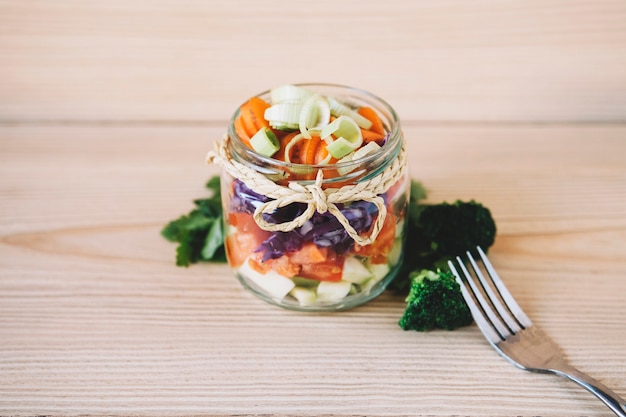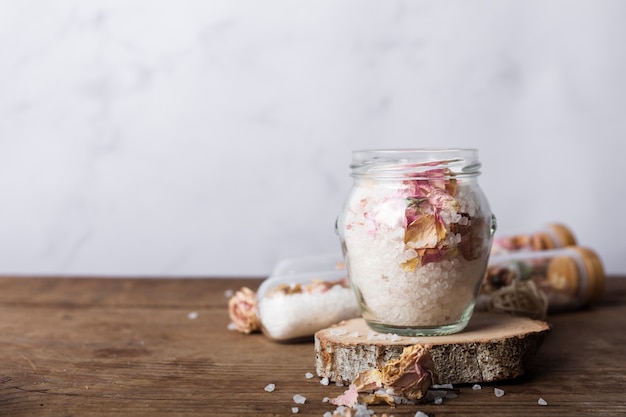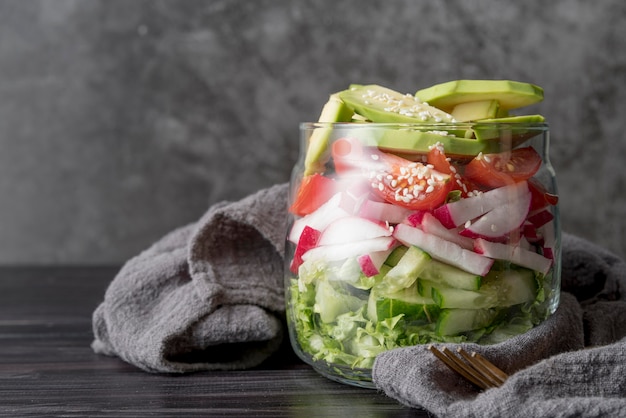Ever found yourself craving a tangy, slightly funky flavor that just screams "comfort food"? That's sauerkraut for you! While I've always been a fan, I'll admit, sometimes that jarred stuff just doesn't hit the spot. It can be a bit too sour, or perhaps a tad too salty, and honestly, it's not nearly as satisfying as homemade. So, I took the plunge into the world of cooking sauerkraut from a jar, and let me tell you, it's been a culinary revelation!
In this article, I'm going to share my journey, along with all the tips and tricks I've picked up along the way. We'll explore easy recipes, discover different ways to use cooked sauerkraut, and even uncover some insider secrets to elevate your sauerkraut game. Grab a fork, a jar of sauerkraut, and let's get cooking!
Part 1: The Basics of Cooking Sauerkraut from a Jar

Why Cook Sauerkraut from a Jar?
Okay, let's address the elephant in the room: why bother cooking sauerkraut when you can just grab a jar from the supermarket? Well, here's the thing – cooking sauerkraut from a jar opens up a world of flavor and creative possibilities. It allows you to control the level of tanginess and saltiness, giving you the power to tailor it to your specific taste. Plus, it's a fantastic way to use up leftover sauerkraut, transforming it into a delicious side dish, or even a full-fledged main course.
Choosing the Right Sauerkraut
Not all sauerkraut is created equal! When selecting a jar, look for one with minimal ingredients – just cabbage, salt, and perhaps a few spices. Steer clear of sauerkraut with added sugar, preservatives, or artificial flavors. These additives can often mask the natural, tangy flavor we're aiming for. Also, pay close attention to the texture – you want a sauerkraut that's firm and not overly mushy. My personal preference leans towards traditional German sauerkraut, known for its crisp texture and its signature tangy, slightly sour flavor.
The Benefits of Cooking Sauerkraut
Beyond its delicious flavor, cooked sauerkraut offers some nutritional benefits. It's packed with probiotics – beneficial bacteria that support gut health. It's also a good source of vitamin C and fiber, making it a healthy addition to your diet. Plus, it's low in calories and fat, offering a guilt-free way to enjoy this tangy treat.
Part 2: Simple and Delicious Recipes

Now, let's get to the heart of the matter – the recipes! Here are some easy and delicious ways to cook sauerkraut from a jar, perfect for both beginners and seasoned cooks.
Recipe 1: Sauteed Sauerkraut with Caraway Seeds
This classic recipe is incredibly simple yet satisfying. It's perfect for those who want to enhance the natural flavor of the sauerkraut while adding a touch of complexity. The caraway seeds bring a warm, earthy note, complementing the tanginess of the sauerkraut beautifully.
Ingredients:
- 1 cup sauerkraut (drained)
- 1 tablespoon butter or olive oil
- 1 teaspoon caraway seeds
- Salt and pepper to taste
Instructions:
- Melt the butter or heat the olive oil in a skillet over medium heat.
- Add the drained sauerkraut and caraway seeds to the pan, stirring occasionally, for about 5 minutes or until the sauerkraut is heated through and slightly softened. You want to achieve a texture that's still slightly crisp, avoiding overcooking.
- Season generously with salt and pepper to your liking.
- Serve warm as a delicious side dish, or enjoy it as a topping for grilled meats, sausages, or even a simple grilled cheese sandwich.
Recipe 2: Sauerkraut with Apples and Onions
This recipe is a delightful combination of sweet and tangy flavors, perfect for those who enjoy a touch of fruit in their sauerkraut. The sweetness of the apples balances out the tartness of the sauerkraut beautifully, creating a harmonious blend of flavors. The addition of onions adds a touch of savory depth.
Ingredients:
- 1 cup sauerkraut (drained)
- 1 tablespoon butter or olive oil
- 1 medium apple, cored and diced (I prefer Granny Smith for its tartness, but feel free to experiment with your favorite variety)
- 1/2 medium onion, thinly sliced
- 1/4 teaspoon ground cumin (for a warm, earthy aroma)
- Salt and pepper to taste
Instructions:
- Melt the butter or heat the olive oil in a skillet over medium heat.
- Add the onion and cook until softened, about 5 minutes. The onion should become translucent and slightly fragrant.
- Add the diced apple, sauerkraut, and cumin to the pan, stirring occasionally. Cook for another 5-7 minutes or until the apples are tender. You want the apples to hold their shape, not become mushy.
- Season with salt and pepper to your liking.
- Serve warm as a delightful side dish for roasted pork, chicken, or even grilled fish. It's also delicious on its own!
Part 3: Going Beyond the Basics: Adding Flavor

Sauerkraut is a blank canvas for your culinary creativity! It's a wonderful base for experimenting with flavors, making it a truly unique and personal ingredient.
Spice it Up!
Want to add a little kick? Experiment with different spices! I'm a huge fan of adding a pinch of red pepper flakes for a touch of heat, or a sprinkle of paprika for a smoky, earthy flavor. If you're feeling adventurous, try adding a few chopped jalapeno peppers or a dash of mustard powder for a bolder, more complex flavor profile. Just remember to start with small amounts and adjust to your liking.
Embrace the Herbs
Herbs can elevate the flavor of sauerkraut in amazing ways. A sprinkle of fresh thyme or rosemary adds a touch of earthiness, while dill provides a bright and refreshing note. You can also use dried herbs – just use a little less than you would with fresh herbs. I find that a combination of fresh herbs really shines, like a mixture of parsley, dill, and chives, creating a harmonious blend of flavors.
A Sweet Touch
For those who enjoy a sweet and tangy sauerkraut, adding a bit of sweetness can be a real game-changer. A touch of brown sugar or maple syrup adds a depth of flavor without overpowering the sauerkraut. You can also experiment with dried fruits, such as cranberries or raisins, for an extra burst of sweetness and a delightful textural contrast. Remember, a little goes a long way, so start with a small amount and adjust to your taste.
Part 4: Creative Applications
Sauerkraut is not just a side dish for sausage or pork chops. It's a versatile ingredient that can be used in a wide range of dishes, adding a unique tangy twist to both savory and sweet creations.
Sauerkraut Soup
This hearty and flavorful soup is a perfect way to use up leftover sauerkraut. You can add other ingredients like potatoes, carrots, and onions for a complete meal. I like to add a dollop of sour cream or a sprinkle of fresh dill for extra flavor, but feel free to experiment with your favorite toppings! Sauerkraut soup is a great way to warm up on a cold day or enjoy a light, comforting meal.
Sauerkraut Pizza
Think beyond the traditional toppings! Sauerkraut adds a surprisingly delightful tangy twist to any pizza. Pair it with sausage, bacon, or even just cheese for a delicious and satisfying pizza experience. Sauerkraut pizza is a fun way to break out of your pizza routine and explore a unique flavor combination.
Sauerkraut Sandwiches
For a flavorful and unconventional sandwich, try adding sauerkraut to your next creation. It's surprisingly delicious with turkey, ham, or even grilled cheese. I also like to add a dollop of mustard or mayo for extra flavor and texture, creating a delightful balance of flavors. Sauerkraut sandwiches are a great way to add a twist to a classic lunch or a quick snack.
Sauerkraut Salad
Sauerkraut can be a refreshing addition to any salad, adding a unique crunch and tanginess to a mixed green salad or a hearty potato salad. Just make sure to drain it well before adding it to your salad to avoid excess moisture. Sauerkraut salad is a wonderful way to add a tangy dimension to a simple salad or to create a more complex flavor profile.
Part 5: The Art of Serving
Sauerkraut is a perfect companion for a variety of dishes. Here are some classic and unexpected pairings that showcase the versatility of this tangy treat.
| Dish | Sauerkraut Pairing |
|---|---|
| Sausages | Traditional sauerkraut, apple and onion sauerkraut, spicy sauerkraut (with red pepper flakes or jalapeno peppers) |
| Pork Chops | Sauerkraut with caraway seeds, sauerkraut with apples and onions, sauerkraut with mustard |
| Chicken | Sauerkraut with herbs (like thyme, rosemary, or dill), sauerkraut with apples and onions, sauerkraut with brown sugar |
| Fish | Sauerkraut with dill, sauerkraut with lemon (for a bright, citrusy note), sauerkraut with capers (for a salty, briny flavor) |
Warm or Cold?
The beauty of cooked sauerkraut is that it can be enjoyed both warm and cold. I personally prefer it warm, but it's equally delicious served cold on a sandwich or salad. Experiment with different temperatures and find what suits your taste best.
Presentation Matters
Don't forget the presentation! A simple serving of sauerkraut can be elevated with a sprinkle of fresh herbs, a dollop of sour cream, or a drizzle of olive oil. You can also serve it in a decorative dish or even in individual ramekins for a more elegant touch. Presentation adds an extra layer of appeal to your sauerkraut creations, showcasing your culinary creativity.
Part 6: The Sauerkraut Journey: From Jar to Plate
Now that we've explored the basics, let's delve into the actual process of cooking sauerkraut from a jar. It's a straightforward process, but following these steps will help you achieve the best results.
Step 1: Drain and Rinse
The first step is to drain the sauerkraut and rinse it under cold water. This removes excess salt and brine, making it less sour and more palatable. It also helps to reduce the acidity, making it easier to digest. You can also gently squeeze out excess moisture with your hands to achieve a drier consistency.
Step 2: Choose your Cooking Method
There are several methods you can use to cook sauerkraut from a jar. Here's a breakdown of popular options:
- Saute it in a pan with butter or oil, adding your desired spices and herbs. This method is quick and easy, perfect for a simple side dish or topping.
- Simmer it in a pot with broth or water, creating a flavorful and comforting dish. This method allows the flavors to meld and create a deeper, more complex taste.
- Bake it in the oven with other ingredients like sausage or pork chops, resulting in a delicious and hearty meal. This method is ideal for a one-pot meal, allowing the sauerkraut to absorb the flavors of other ingredients.
Step 3: Add Flavor
This is where your culinary creativity comes into play! Add your favorite spices, herbs, and even fruits or vegetables to create a unique and flavorful sauerkraut dish. Don't be afraid to experiment and find what you enjoy best. Remember, flavor is subjective – what one person finds delicious might not be to another's liking.
Step 4: Adjust Seasoning
Once the sauerkraut is cooked, taste it and adjust the seasoning as needed. You may want to add more salt, pepper, or even a touch of sugar to balance out the acidity. Adjusting the seasoning ensures that the final flavor profile of your sauerkraut aligns with your preferences.
Step 5: Serve and Enjoy!
Your delicious homemade sauerkraut is ready to be served. Enjoy it as a side dish, a topping, or even as a main course. Be creative and have fun with it! Sauerkraut is incredibly versatile and can be enjoyed in numerous ways.
Part 7: Tips and Tricks
Here are some tips and tricks that I've learned along the way that can elevate your sauerkraut game. These little details can make a big difference in the final flavor and texture of your cooked sauerkraut.
Don't Overcook it!
Sauerkraut can become mushy if it's overcooked. Cook it just long enough to heat it through and soften it slightly. You want to maintain some of its original texture and crispness. The ideal texture is one that's slightly softened but still has a bit of a bite.
Add a Splash of Liquid
If your sauerkraut is too dry, add a splash of broth or water to keep it moist and prevent it from burning. You can also use apple cider for a touch of sweetness. The liquid helps create a more flavorful and moist sauerkraut.
Experiment with Flavors
Don't be afraid to experiment with different flavors. Try adding different spices, herbs, and even fruits or vegetables to create your own unique sauerkraut creations. Remember, the best recipes often come from experimentation and personal preferences.
Leftovers are a Blessing
Leftover sauerkraut can be stored in the refrigerator for up to a week. It's a great way to have a quick and easy meal or snack. You can even use it to make a delicious soup or salad. Leftovers are an excellent way to minimize food waste and enjoy the flavors of sauerkraut in new ways.
Embrace the Fermented Goodness
Remember, sauerkraut is a fermented food, so it will have a slightly pungent smell. This is completely normal and a sign of its delicious flavor. Don't be deterred by the smell – it's a testament to the unique and flavorful fermentation process.
Part 8: FAQs
Here are some commonly asked questions about cooking sauerkraut from a jar. Knowing the answers to these questions can help you navigate the world of cooked sauerkraut with confidence.
1. Can I use sauerkraut from a jar in recipes that call for fresh sauerkraut?
While it's possible to use jarred sauerkraut in recipes that call for fresh sauerkraut, keep in mind that it will have a different flavor and texture. It might be too sour or salty for some recipes. If you're unsure, it's best to err on the side of caution and stick to recipes specifically designed for jarred sauerkraut. This will ensure that the flavors meld well and that the final dish is balanced and delicious.
2. Can I make sauerkraut from scratch?
Absolutely! Making sauerkraut from scratch is a rewarding experience that allows you to control the flavor and texture. It's a simple process that involves fermenting shredded cabbage with salt. There are many online resources and recipes that can guide you through the process. However, it requires a bit more time and effort than simply cooking sauerkraut from a jar. Making sauerkraut from scratch is a great way to delve deeper into the world of fermentation and create a truly personalized sauerkraut experience.
3. How long does it take to cook sauerkraut from a jar?
The cooking time for sauerkraut from a jar depends on the method you use. Sauteing it takes about 5-10 minutes, simmering it takes around 15-20 minutes, and baking it takes about 30 minutes, depending on the recipe and the other ingredients involved. Knowing the approximate cooking times helps you plan your meals efficiently.
4. Can I freeze cooked sauerkraut?
Yes, you can freeze cooked sauerkraut for up to 3 months. However, it's best to freeze it in an airtight container or freezer bag, as it can become dry and lose its flavor if it's not properly sealed. Freezing cooked sauerkraut allows you to enjoy it at a later date, making it a convenient option for meal prepping or using up leftovers.
5. What are some other ways to use cooked sauerkraut?
Besides the recipes mentioned above, cooked sauerkraut can be used in a variety of ways. You can add it to chili, stew, or even a hearty breakfast hash. It can also be used as a topping for hot dogs, burgers, or tacos. Be creative and explore different culinary possibilities! Sauerkraut is a versatile ingredient that can add a unique twist to a wide range of dishes.
I hope this article has inspired you to try cooking sauerkraut from a jar. It's a simple yet rewarding experience that opens up a world of delicious possibilities. Don't be afraid to experiment and find what you enjoy best! So grab a jar of sauerkraut, some spices, and let your culinary creativity flow! Enjoy the journey of exploring the wonderful world of cooked sauerkraut.
Everyone is watching

Prime Rib Roast Cooking Time Chart: Per Pound Guide
Cooking TipsPrime rib roast. Just the name conjures images of lavish dinners, crackling fires, and hearty laughter. It’s ...

How Long to Bake Potatoes in the Oven (Perfect Every Time)
Cooking TipsBaked potatoes are a staple in my kitchen. They're incredibly versatile, delicious, and surprisingly easy to m...

Perfect Rice Every Time: The Ultimate Guide to Cooking Rice
Cooking TipsAs a self-proclaimed foodie, I've always been a bit obsessed with rice. It's the foundation of countless cuisi...

The Ultimate Guide to Cooking Asparagus: Tips, Techniques, and Recipes
Cooking TipsAsparagus. The mere mention of this spring delicacy conjures up images of vibrant green spears, crisp and burs...

Ultimate Guide to Cooking the Perfect Thanksgiving Turkey
Cooking TipsThanksgiving. Just the word conjures up images of overflowing tables laden with delicious food, the scent of r...
